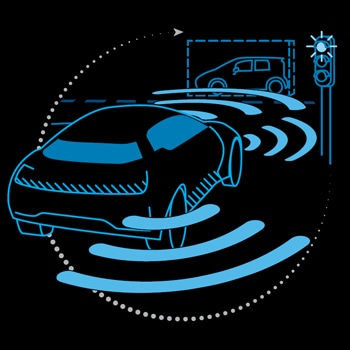Article
Autonomous Driving: Hype or Reality?
Moonshot Project with Quantum Leap from Hardware to Software & AI Focus
Future autonomous (electric) vehicles are primarily software-driven products compared to traditional cars. The upcoming transformation in the automotive industry from a “made of steel” business towards “software is eating the world” will be no doubt a game changer – it remains to be seen whether today’s automotive industry giants will still play a leading part in the future mobility value chain.
In recent years, autonomous driving and so-called robotaxis have become one of the hottest topics in the automotive industry - and beyond!
Recent autonomous vehicle forecasts call for sales of more than 30 million autonomous vehicles in 2040. Although the sharpest gains are expected to occur after 2030 compared to one million in 2025, commercial market introduction is announced by several OEMs for 2021.
Traditional car manufacturers and established suppliers are not the only ones who are trying hard to find the sweet spots in this new emerging mobility value chain. Tech giants like Nvidia and Intel, leading software and internet players like Google (Waymo) and new mobility startups such as Aurora, Cruise and Uber are also on the verge of reaping the rewards of an entirely new future mobility era.
However, we are all aware of several technological hype cycles, ranging from the internet bubble at the turn of the millennium, the proclaimed significant increase in e-mobility, which the world is still waiting for, and lately blockchain and Bitcoin, which receive significant media attention. But where among all these trends and hypes can we place autonomous driving?
This publication shows some forecasts to frame the general market potential for autonomous driving solutions and provides a framework to align on common terms and wording when it comes to automated and 'real' autonomous driving.
Impact on Today’s Automotive Industry
Cars are no longer merely the means of getting from point A to point B, nor are they simply status symbols; instead, they have become functional assets. Car manufacturers are facing a similar trend like their counterparts in the mobile phone industry years ago, namely the shift from one-purpose devices (simple mobile phone) to multi-purpose platforms (smartphone). The car is turning into a platform to serve a variety of functions.
Therefore, future autonomous (electric) vehicles are becoming much more software-driven products compared to traditional cars. In turn, this requires a major paradigm shift in OEM product development organizations:
- Product Structure: Hardware vs. Software Share
The share of value added to the vehicle between hardware versus E/E and software is shifting in favor of the second. Consequently, car manufacturers undergo major transformations to refocus their core competencies and build up expertise in those areas. - Work Structure follows Product Structure: Agile Development Organization & Processes
Structures and processes that have proven successful for the development of products with low shares of E/E and software are no longer ideal for the development of autonomous vehicles. Companies are increasingly replacing classical waterfall structures with agile approaches. - New Steering Models: From KPIs to Progress Indicator
New work structures and development processes require new steering models. Key performance indicators (KPIs) are an effective tool to evaluate an organization's success at reaching targets. This applies mostly to situations that are predictable and linear. Environments that are complex and unpredictable in nature, such as the development of autonomous vehicles, require different approaches to success evaluation. Where the technology is new, the outcome uncertain and the timeline unpredictable, classical KPIs often do not provide sufficient benefit. - Mastering New Technologies: Cooperation vs. Supplier Relationships
Traditionally, car manufacturers have outsourced large shares of development work to suppliers in classic contract relationships. This is a viable option when confronted with known technologies that can be partitioned with clear interfaces.
In the case of autonomous driving, there are many unknowns for what constitutes the optimum technical solution. Additionally, no single player in the industry possesses all the skills necessary to develop the perfect solution. For this reason, companies are joining forces in development partnerships and increasingly via mergers and acquisitions.
The Way Forward
Now that new players from the tech sector have entered the stage in the automotive industry, traditional manufacturers and suppliers try hard to continuously shorten development cycles and to catch up with the inevitable move into the new software era. Collaborative agile working models predominantly known from the software industry and more innovative cooperation management approaches are paving the way for tackling these challenges and turn them into opportunities.
Download the publication and learn more about how autonomous driving will shape the future of the automotive industry.

Explore related content on Deloitte Insights: Software is transforming the automotive world: Four strategic options for pure-play software companies merging into the automotive lane.
Also available via the Deloitte Insights App. Download it today from the App Store and Google Play.



